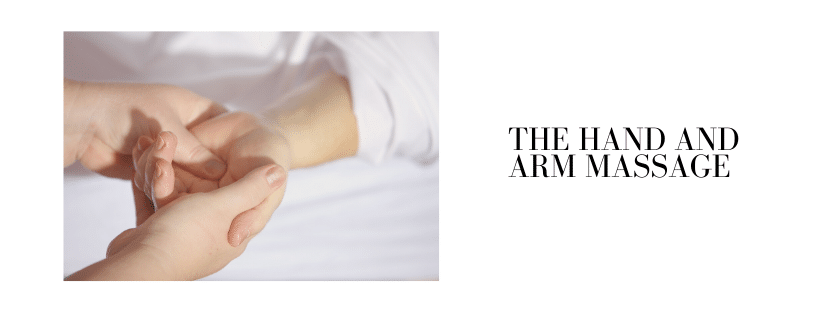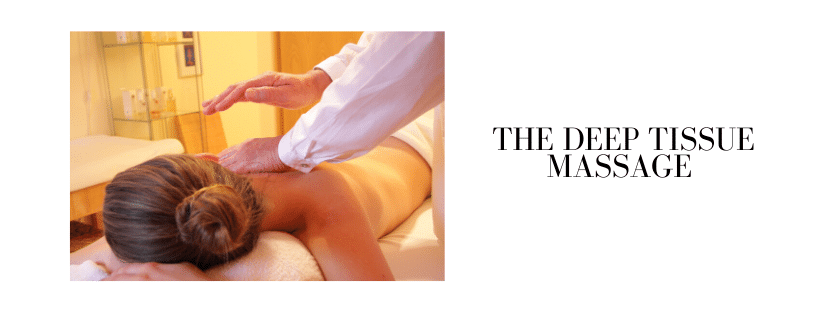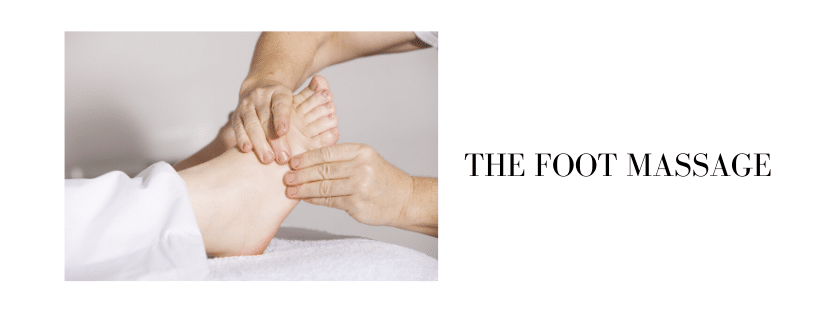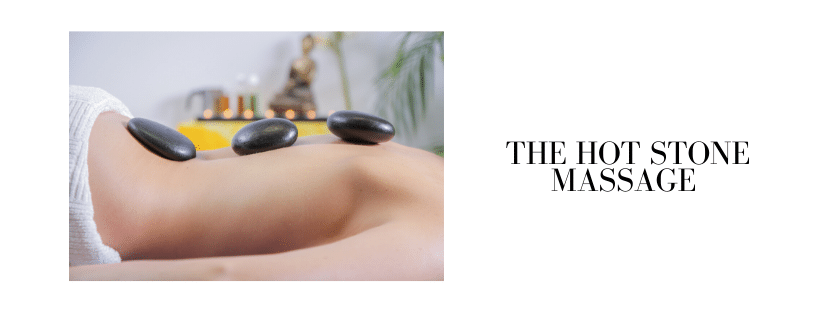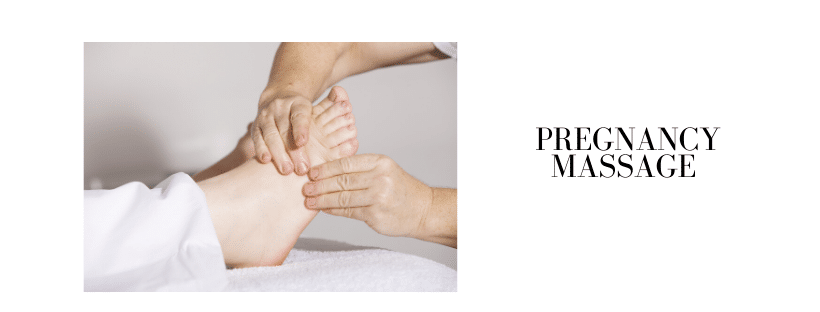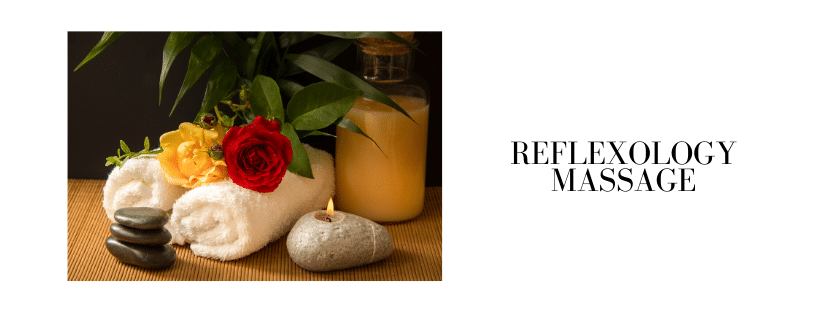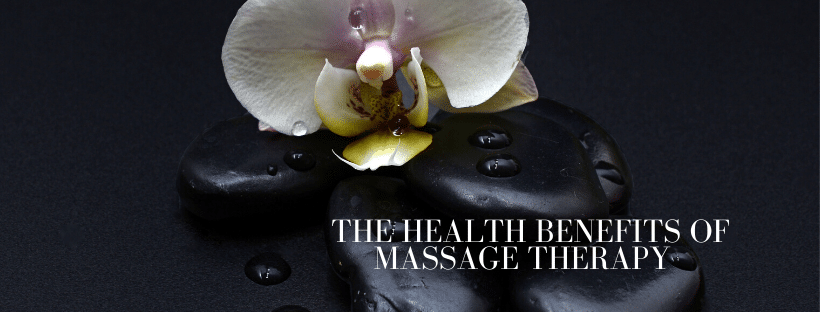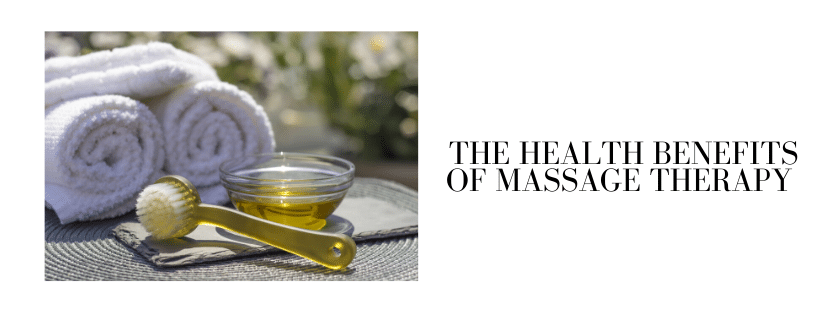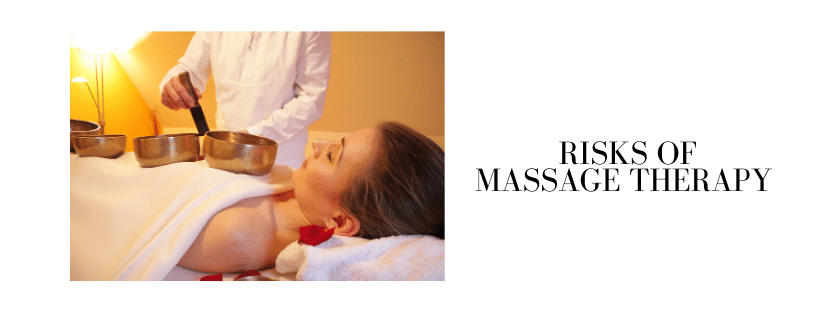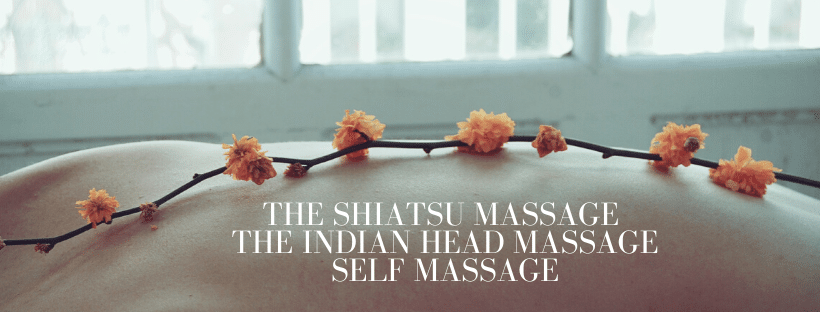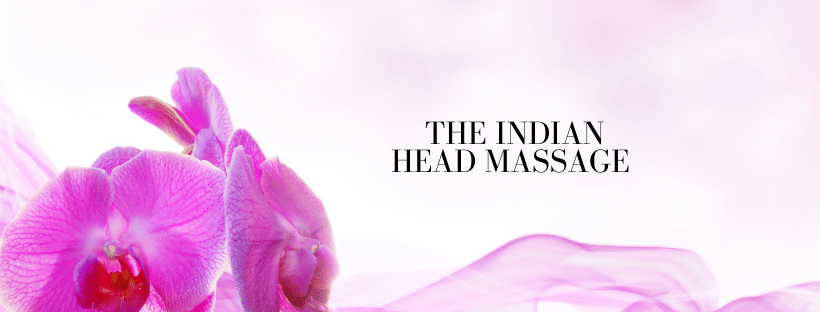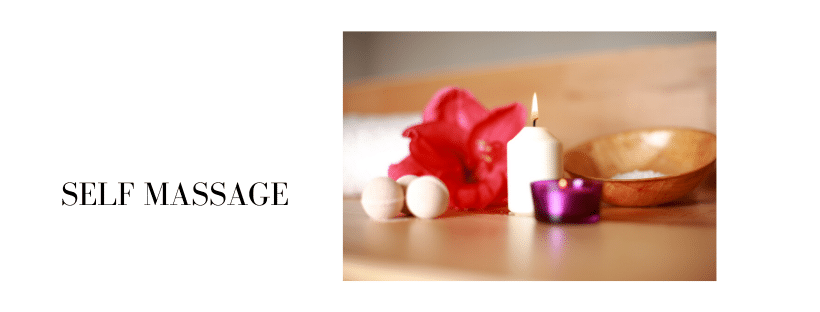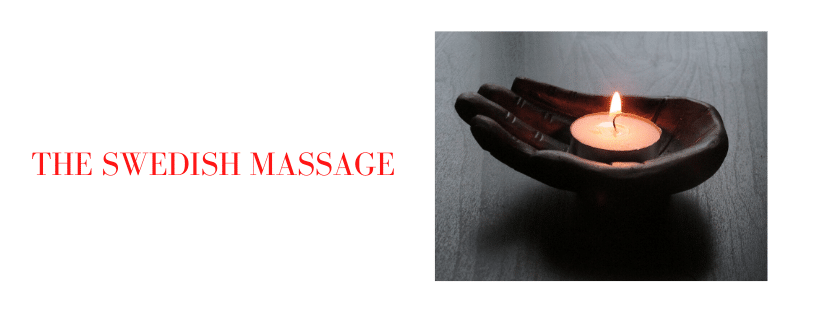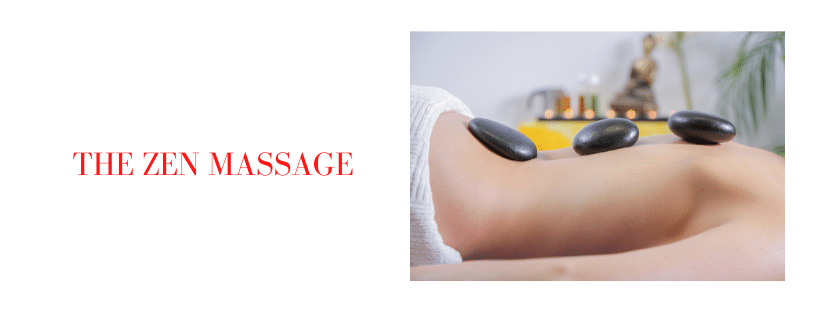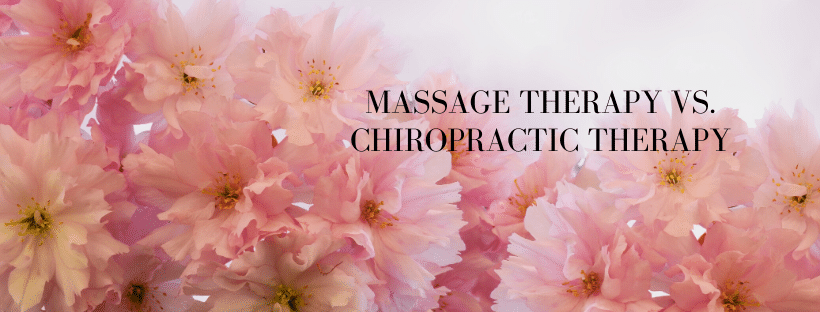
MASSAGE THERAPY VS. CHIROPRACTIC THERAPY
If you are anything like me, you probably prefer staying away from providers of conventional Western medicine as much as possible and I cannot say that I blame you. Although I have full medical coverage for that “you never know when you might need it” time of my life, I have not seen any of my Blue Cross doctors in well over ten years, and I hope to continue not seeing them for the rest of my life. Please do not miss understand me and think that I am some sort of superhuman creature who never gets ill. I do have my weak moments of pain and sniffles just like everyone else, or at least everyone else who takes good care of him or herself. So, when my body seems to need a boost, I visit one of my two favorite practitioners of alternative medicine; my massage therapist or my chiropractor.
I know that it all sounds very simple and straight forward but it is, in fact, somewhat challenging at times, because I do not always know which one of these wonderful professional to seek out. So, I often first opt to visit my chiropractor for a good therapeutic session of adjusting and aligning my skeletal structure and then, as an extra bonus to me and my one and only body, I also make an appointment with my massage therapist for some hefty digging and rubbing. Between the two of them, I come out feeling like a million bucks although my finances are sadly depleted. I figure that we, my body and I, are worth it.
Now, you might ask and rightfully so, “What is the difference between massage therapy and chiropractic therapy?” Well, I will be happy to tell you:
* Chiropractic Therapy.
– For the most part, chiropractic therapy focuses on the hard tissues such as the spine and other joints for adjusting and realignment. Chiropractors have some training in massage techniques but that is never their first and foremost priority.
– Chiropractors are authorized to make a medical diagnosis, order x-rays or blood works.
– Chiropractors cannot prescribe conventional medications but they can sell supplements or homeopathic remedies.
– Chiropractors do not need medical referrals to perform their work.
* Massage Therapy.
– Massage therapists perform wonderful work on the soft body tissues such as the muscles, tendons, and ligaments but they have not been trained nor are they licensed to adjust the spine or any other joints.
– Massage therapists may not legally make a medical diagnosis, order x-rays or any blood work.
– Massage therapists are not permitted to dispense medications of Western medicine but they can and do provide or recommend alternative herbal remedies.
– Massage Therapists do not required referrals from anyone to conduct their massage sessions.
A highly acclaimed national non-profit magazine recently conducted a study in which more than 34,000 participants in the United States were asked to rate which alternative treatments worked best for their two biggest health problems for the past two years and the overwhelming majority voted just as I would have; for deep tissue massage therapy and chiropractic therapy in equal measures for such conditions as back pain, osteoarthritis, rheumatoid arthritis, fibromyalgia, respiratory problems, high blood pressure, high cholesterol, depression, insomnia and prostate problems.
Of course, as far as alternative medicine is concerned, one should not discount acupuncture and reflexology for they too are beneficial in their own very special ways.
What You Need To Know About Massage Therapy Before Making Your Decision To Go On With A Program…
That plus so much more is covered in the Massage Therapy eBook and can be yours today via instant download.
DYSFUNCTIONS RESPONDING TO CLINICAL MASSAGE
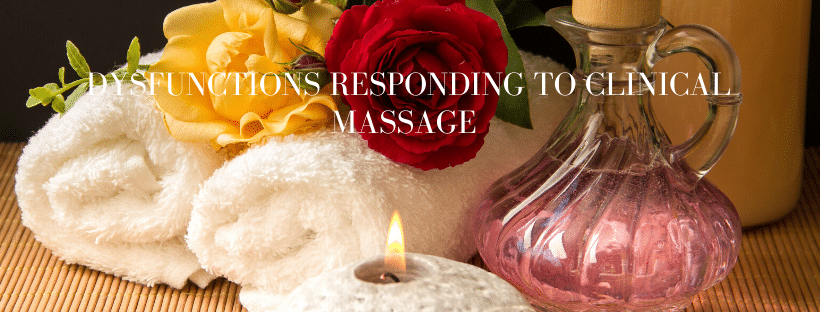
Occasionally referred to as an orthopedic massage, Clinical massage is an entire array of manipulation techniques designed to assess and then to minister to soft tissue injuries and these may include but are not limited to: massage therapy, trigger point therapy, myofascial release, muscle energy techniques, craniosacral therapy, deep tissue massage and so on. Clinical massage therapy is usually based on a physician’s prescription and directives as a series of treatment sessions to be performed over a set period of time and at a specified frequency as related only to a specific need. In that regard, this therapy is most often performed with a particular and purposeful outcome in mind, and its first and foremost objectives are to relieve pain, to increase the range of motion and to help repair and restore soft tissues such as muscles, tendons, and ligaments to their normal and healthy functions.
The first of the doctor-prescribed set of sessions is predominantly devoted to assessment or diagnostics of the client’s true condition and with all the data collected an action plan can be formulated:
* By using various levels of palpation or touching of the ailing body part, the massage therapist will pinpoint the exact location as well as determine the levels of pain.
* The range of motion and the strength of the muscles is tested through a sequence of movements such as a passive movement which involves the massage therapist moving the relevant muscle groups while the client is inert; an active movement which involves the client’s own movement of the muscles in questions; and the resisted movement which involves the clients’ movement against a resisting force.
* If clinical data related to previous soft tissue injuries and massage therapy is available, it will be reviewed for comparison to the current situation and the phase of healing will be determined.
* The findings are closely reviewed along with the doctor’s orders and customized Clinical massage therapy is drawn up.
Most every condition of the soft tissues can benefit from Clinical massage to some extent, but the following list displays dysfunctions which respond most advantageously to its application:
Myofascial Pain. Pain and physiological dysfunctions are known to begin at specific points within muscles and their connective tissues which are also known as fascia. These are appropriately referred to as trigger points because they tend to set off or trigger reactions at remote locations.
Scientists and researchers have successfully recorded comprehensive map systems of myofascial trigger points and they have been able to identify dozens of dysfunctions relating to them. The most common of these are: carpal tunnel syndrome, TMJ dysfunction, PMS, headache, diarrhea, dizziness, cardiac arrhythmia, indigestion, tennis elbow, urinary frequency, sinusitis, deafness, and blurred vision.
Fascial Plane Dysfunction. Fascia covers nearly the entire body in large endlessly connected sheets which can be distorted and bound to themselves and nearby tissues when inflicted with injury, misalignment or a chemical imbalance. To promote optimal health, the fascial sheets and the blood vessels and nerves which follow them must be in good condition.
Neuromuscular Dysfunction. Even the simplest and the tiniest of movements of the body require armies of nerve impulses to be sent to the muscle which is directly involved, as well as to the adjoining and opposing muscles. And it must all be accomplished with a precision of timing and proportions. When the mechanics of any part of these functions break down, muscle fibers or entire muscles lock.
Tonus System Dysfunction. Overused muscles become hypertonic or lose their ability to relax. Consequently, they tighten and cause stress on opposing muscles and on the joints they cross.
Dermatomic Dysfunction. When nerves are pinched anywhere along their path, the pain will be delivered to the area they serve.
Spondylogenic Dysfunction. When joints of the spine are impaired or compressed, the pain will occur in that specific area.
Stated more simply, people suffering from muscle or joint pains or tightness, muscle fatigue or tension, shooting or spreading pains, allergies or asthma, anxiety or depression, irregularity of the digestive system, arthritis or circulatory problems, sleep disorders, headaches, immune function disorders or stress, they can be helped as their symptoms can be relieved through Clinical massage.
Have you always wondered about massage therapy or maybe even had your doctor recommend it at some point?
You’ll learn about all of the different procedures so that you can choose one that’s right for your life and your specific situation.
MASSAGE FOR YOUNG CHILDREN
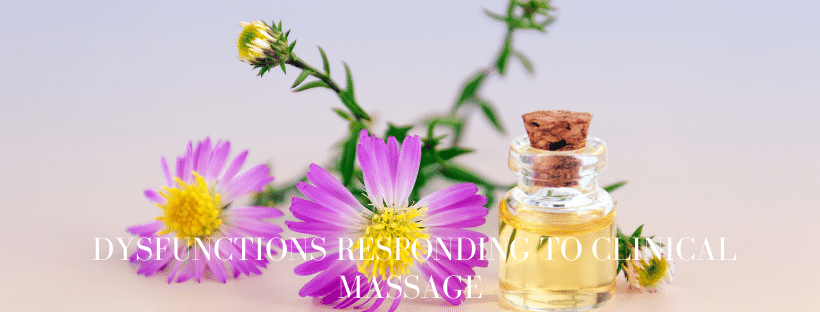
Countless studies and pediatric research have shown that massage therapy is supremely beneficial for a wide variety of conditions in young children. As a matter of fact, these studies revealed that massage therapy for young children is a crucially important supplemental treatment to conventional medicine. However, these studies further showed that, in many cases, massage therapy on its own works better in relieving symptoms of many disturbing conditions than do medications and other standard procedures associated with Western medicine.
According to the National Institute of Arthritis and Musculoskeletal and Skin Diseases (NIAMA), more than twenty percent of all children, from newborns to toddlers and early school year children, are afflicted with eczema at some point in their young lives and roughly the same percentage is true for infants and young children suffering from traumatic burns. For that reason, the pain and suffering of trauma burns and eczema are counted among the most common pediatric skin conditions in the United States. Most studies bring to light the following findings:
* Young burn trauma patients who were treated with massage therapy sessions for approximately thirty minutes before any kind of medical or nursing procedures, were more relax physically as well as mentally through the process and they, therefore, experienced less discomfort or pain.
It is important to stress here that the massage treatment was applied only to areas that were not affected by burns.
* Young children suffering from eczema (also known as atopic dermatitis) who were given massage treatments before and while being treated with skin medications such as emollients and ointments exhibited less apprehension and they were more willing to cooperate. In addition, the physical conditions of their skins dramatically improved as redness subsided, as did lichenification, scaling, excoriation, and pruritus.
The therapy in these conditions ideally consists of two phases. In the first phase — to ensure smooth strokes during the massage treatment, the child’s body is moisturized with a dermatitis medication. In the second phase — being very careful to avoid particularly sensitive areas of the body, a series of varied massage techniques is used on the child’s face, chest, stomach, legs, and arms.
The Children’s Mercy Hospital of Kansas City, Missouri has been using massage therapy to alleviate chronic pain from headaches and migraines in young children and, in the process, also relieving their levels of anxiety and distress, lowering their heart rates, improving their gastrointestinal systems, promoting the release of endorphins and bringing their entire bodies to a state of calmness. And all these positive effects seem to be immediate or nearly immediate.
Applying massage therapies to infants and young children is not at all a newly discovered concept as it has been a daily practice in the Eastern and African cultures for many generations. They understood that the first sense to develop in humans is the sense of touch and that it is essential to health and wellness. Massage treatments for the young members among ancient cultures served to heal, to energize, to calm and to reinforce close bonding and the sense of trust and security.
Having been working zealously on the subject of massage for young children for the past ten or so years, Dr. Tiffany Field and her associates at the Touch Research Institute (TRI) in Miami, Florida insist that, “Every child, no matter the age, should be massaged at bedtime on a regular basis.”
Would you like to know the true healing properties that can be gained from using massage in your life?
You’ll get a detailed introduction to Massage Therapy as well as learn how to find a good massage therapist.
THE KOREAN MARTIAL THERAPY
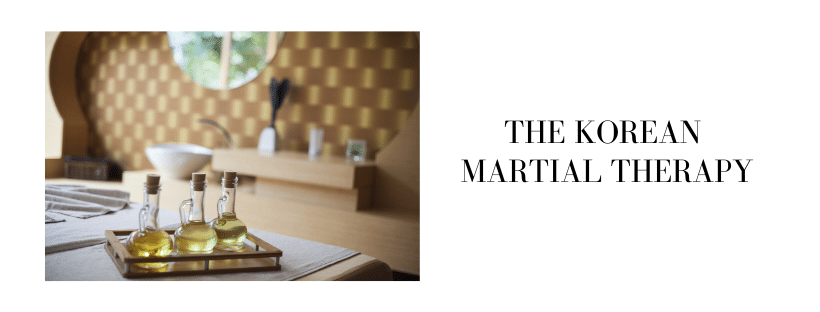
The Korean Martial Therapy, also well known by its acronym KMT, had been recognized for its effectiveness in keeping warriors in their topmost forms after as well as before battles. The Korean Martial Therapy, therefore, became widely used and closely associated with the numerous Korean martial arts since the 17th century.
A newly developed Korean martial art, combining several old Korean martial arts and the Japanese Aikido discipline, was introduced in Korea in the latter part of the 19th century as Hapkido. Today, Hapkido is one of the most popular martial arts in Korea as well as elsewhere around the world and has become closely linked to the Korean Martial Therapy.
The Korean Martial Therapy made its way into the United State via Jae Kwon Yun, a master in Korean martial arts specializing in Hapkido for many years, who opened a school of Korean Martial Therapy where he integrated the combative aspect of Hapkido with the therapeutic aspect of the Korean Martial Therapy. This, in his opinion, formed a perfectly balanced modality.
Now that we have covered some of its background histories, let us look at the Korean Martial Therapy itself and its technique of deep tissue massage as it is performed in either a sitting position or reclining flat on a massage table. The fundamental principle of Korean Martial Therapy is to utilize a variety of sinuous movements performed by the client to promote the therapeutic effects on the body and the spirit. Traditionally, Korean Martial Therapy was facilitated by a trained therapist or a practitioner who guided the client’s body into the correct movements and positions. However, Korean Martial Therapy can be just as easily accomplished as a self-directed therapy without losing any of its curative values.
Another crucially important principle of Korean Martial Therapy is the notion that the same movements that can lead to pain, damage and destruction on the battlefield can also be used to provide healing in a peaceful arena. In other words, Korean Martial Therapy works on the premise that anything that can hurt can also do the opposite; it can cure. And in fact, many of the pressure points along the gi meridians used in Korean Martial Therapy for promoting positive energy for restoring health are likewise used in Hapkido as points for promoting negative energy and agony.
Initially having been created for the battlefield to relieve combatants of their pain and suffering, the Korean Martial Therapy primarily strives for instant curative results. And that is in direct opposition to other alternative healing techniques which aspire for long term effects of weeks or months or even years into the future. Korean Martial Therapy is made up of a varied combination of techniques and the most frequently used among them are the conventional massaging strokes, ballistic stretching, applying deliberate pressure to specific points along the body, the yin yang therapy and the Korean energy work. Since the Korean Martial Therapy makes the most of the body movements used in martial arts, it relieves the therapist from doing much of the work and it has, therefore, been favored by many practitioners.
Perhaps the Korean Martial Therapy has not had must use on the modern-day battlefields as it had in the past, but it certainly is great for treating the more contemporary conditions such as repetitive motion syndromes, stress, and muscle strain as well as depression, anxiety, migraine headaches, and sports injuries.
Massage therapy has been around for centuries and can completely eliminate pain, aches and muscle strains.
The good news is that through the release of the Massage Therapy eBook you get all of that information plus some!

